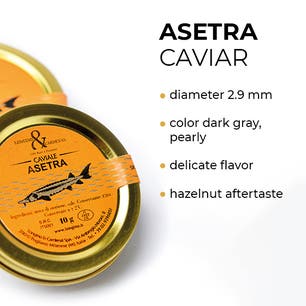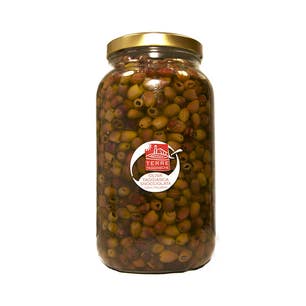Bluefin Tuna
BLUEFIN TUNA
The Bluefin Tuna: The Mediterranean Giant
Bluefin tuna, known scientifically as Thunnus thynnus, is one of the most prized and sought-after fish in the seas around the world. Mediterranean bluefin tuna (Thunnus thynnus) is an extraordinarily delicious fish, loved by chefs and gourmets around the world for its unique flavor and versatility in cooking.
Bluefin tuna is a pelagic species, living in open waters far from the coast. Its natural habitat stretches from the Atlantic to the Mediterranean, and it is a true giant of the sea: it can reach up to 3 meters in length and weigh over 600 kg, although the most common size is around 2 meters and 200 kg.
But what are the characteristics that make the red tuna so special? One of the most striking features of the bluefin tuna is its ability to swim at great speed, up to 80 km/h, thanks to its body shape, perfectly adapted to life in the open sea. Its colors range from dark gray on its back to silvery white on its belly, while its fins are an elegant pearly gray.
But it's its meat that makes bluefin tuna so sought after. Rich in Omega-3s, protein and vitamins, it has a deep red, almost purple hue with veins of fat that make it incredibly tender and juicy. It is perfect whether grilled or baked, or eaten raw, as in sashimi or tartare.
Let's begin this journey to discover the characteristics of bluefin tuna and what makes it such a sophisticated gourmet ingredient.




The sea treasure that fascinates gastronomes
The bluefin tuna is a species that lives from the Atlantic to the Mediterranean, along with some fish that make long journeys through these seas during their lives. Its characteristic slim body shape, powerful fins and extraordinarily developed musculature enable it to reach impressive speeds of up to 80 km/h, making it one of the fastest swimmers in the undersea world.
The bluefin tuna has a very varied and nutritious diet, which helps give its meat that much sought-after unique flavor. Its diet consists mainly of fish and squid, which it catches with quick and precise attacks. Thanks to its exceptional sense of sight and speed, the red tuna is a skilled predator, able to catch its prey even in low light or stormy waters.
The name "red tuna" comes from the characteristic flesh color. Unlike other tuna species, red tuna has a deep red, almost purple flesh, due to the large amount of myoglobin, a protein that transports oxygen in the muscles. This color, combined with the presence of veins of white fat, makes its meat not only delicious, but also very beautiful to look at.
Bluefin tuna is undoubtedly one of the most precious treasures of our sea. Its life, habits and characteristics make it a unique species, able to fascinate both sea lovers and gourmets.


Bluefin tuna in the Mediterranean climate
The Mediterranean bluefin tuna has developed a number of adaptations over the centuries that have allowed it to live in the Mediterranean. This sea is characterized by higher temperatures and a more diverse environment than the Atlantic, with deeper waters and fewer strong currents.
While bluefin tuna in general is known for its transoceanic migrations, Mediterranean bluefin tuna tend to stay within the Mediterranean basin for most of its life cycle. These tunas migrate across the Mediterranean from west to east and back again, depending on the seasons and food availability.
Although the diet of Mediterranean red tuna is similar to that of its Atlantic cousins, there are differences due to the variety of species available in the Mediterranean. Mediterranean red tuna feed on a variety of fish, squid and crustaceans that are typical of this region.
The Mediterranean plays a crucial role as a spawning area for red tuna. Most Mediterranean red tuna gather in the Balearic Sea to spawn between May and July, a unique behavior compared to Atlantic red tuna.
The meat of Mediterranean bluefin tuna is particularly prized for its quality and flavor. This is due to the unique environmental conditions of the Mediterranean, which influence the tuna's diet and, consequently, the quality of its meat. Mediterranean bluefin tuna is renowned for its rich, red meat with a unique texture and flavor.


Bluefin Tuna Recipes
Bluefin Tuna is an extremely versatile and popular ingredient in gourmet cuisine. Its rich, flavorful flesh makes it the ideal ingredient for a wide range of recipes, from the most traditional to the most innovative. A timeless classic is bluefin tuna tataki: grilling enhances the juiciness of red tuna and emphasizes its unique flavor. Simply season the tuna steaks with extra virgin olive oil, salt, and pepper, then grill them for a few minutes on each side and finally serve with a squeeze of lemon juice for a touch of freshness.
Tuna tartare is an elegant and refined recipe that enhances the quality of red tuna. Tuna is diced and seasoned with olive oil, lemon juice, salt and pepper. Depending on taste, other ingredients such as red onions, capers or a touch of mustard can be added. For a simple but impressive recipe, you can try baked bluefin tuna. Season the tuna with oil, salt, pepper and herbs such as rosemary or thyme, then bake in the oven. The result will be a flavorful and nutritious dish, perfect to serve with a fresh salad or grilled vegetables.
Sashimi is a traditional Japanese dish that enhances the quality of red tuna. Cut the tuna into thin slices and serve with soy sauce and wasabi. Finally, red tuna carpaccio is a light and refined appetizer. Cut tuna into thin slices, season with olive oil, lemon juice, salt, and pepper, and serve with arugula and parmesan cheese.
Discover the products and pairings
Longino & Cardenal
Longino & Cardenal stands today as one of Italy's leading "food globetrotters." With passion and courage it carries out a continuous search for the best raw materials, often little known to most, in order to meet the new trends in consumer behavior that seek excellent products proposed in innovative forms. Delivery of products is expected in 48/72 hours from the order if the product is already in stock. All our deliveries use specialized, refrigerated couriers.











